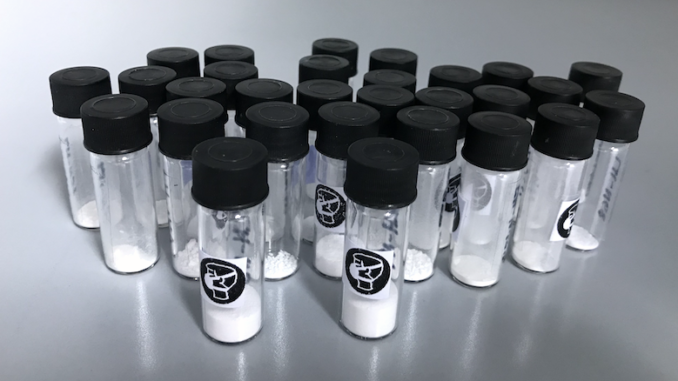
During her Master’s project, Laura Henning (from the working group of Ulla Simon, TU Berlin) has systematically studied the effect of synthesis parameters on the pore structure of mesoporous silica. This work has just been published in a nice paper. As the very first friendly user on the MAUS, her project helped us develop the procedures and standards for our current work…

The measurement requirements of her project were straightforward: measure a single angular range of a range of strongly scattering porous silica powders. Unbeknownst to Laura, she has been the perfect friendly user: filling in most of the sample holders by herself, some even via a mail-in procedure, and filling in all the details in our sample / project form.
One of the more esoteric parts on our project form is the H0 (and optional H1..HN) hypotheses. These let the researcher indicate what question they are trying to address or disprove with the SAXS/WAXS measurements, and what precision they need to check their hypotheses. This is very helpful for us, because it tells us what set-up and measurement conditions are best suited to help them.
Unfortunately, most materials scientists ignore this section of our form, or do not put sufficient information into it. Asking us to measure a sample “to see if there is a difference”, is a lot less likely to be useful to the researcher than when you pose a specific, detailed question.
Laura filled in the form, stating exactly what peak position and shift she expected to see, and what peak shifts she would consider to be a significant difference. This let us set up the ideal detector distance and measurement time, to get the peak positions to the required accuracy. With our newly minted electronic logbook, we could quickly set up the same measurement conditions for further measurements, whenever a new batch of samples would arrive.
The paper documents the changes to the pore structure, assessed using a range of techniques, that result from changes to the synthesis procedure. The investigated parameters vary the synthesis and calcination temperatures and the effect of different amounts of washing in between. The result is a nice overview of the pore size and structure-range, easily achievable with simple changes in synthesis. We are very happy to have contributed towards this research, and wish Laura all the best in her new Ph.D. project!

Leave a Reply